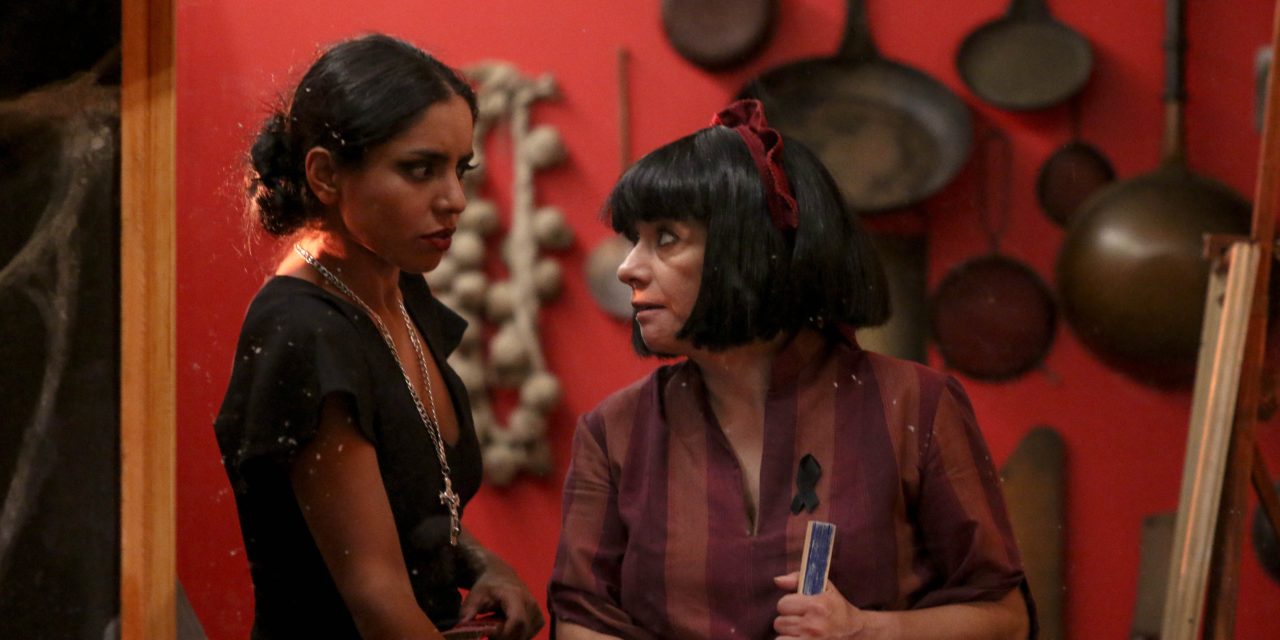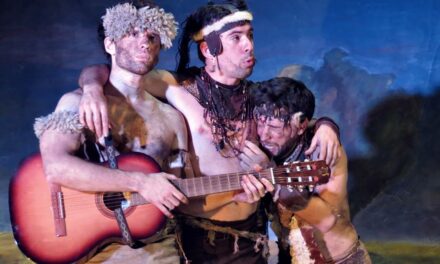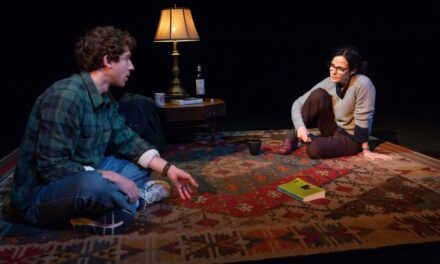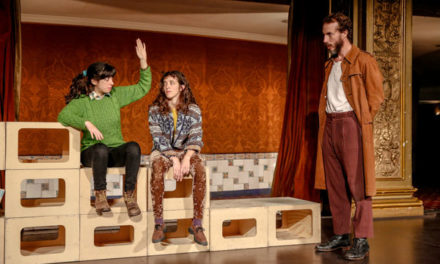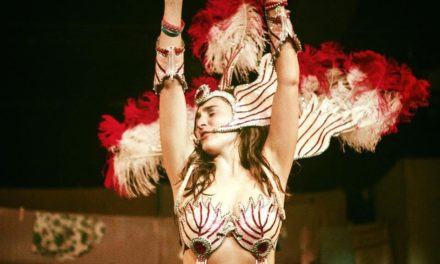La terquedad is the culmination of the Heptalogy of Hieronymus Bosch — inspired by the 15th-century painter’s Table of the Seven Deadly Sins — that Spregelburd has been writing since 1996.
This Heptalogy includes seven plays whose titles are sometimes a counterpoint to those sins and sometimes are new “sins,” correlative to contemporary times. In those cases, the connection with the original ones is absolutely oblique. All of them have in common the excess; that is what turns a natural human behavior into a sin. In the case of La terquedad, the hidden sin is Wrath.
Apart from a moment of rage or desperation at a certain point of the play — when Planc feels that the future is laughing at him — Spregelburd could have been inspired too by the image of Wrath of two men fighting and a woman attempting to break up this fight. The confrontation of these men could also allude to disputes over ownership of the land during the Spanish Civil War, an issue that is present in La terquedad.
However, the playwright places emphasis on the mystery of many of the symbols of Bosch’s images because he painted his work according to a dictionary we have lost. That is why Spregelburd creates a new and contemporary moral cartography that responds to the crises of Modernity.
But the first trigger to create his Heptalogy was the active and dynamic attitude that Table demands from the viewer. Even though in the center of the picture there’s the eye of God, there is no clear hierarchy; the viewer can choose where to start observation and in what direction to continue the viewing and has to move around the table to complete it.
“Besides the attack, the background makes the foreground figure, I have always liked so much of Bosch (one has only to remember The garden of earthly delights, where one cannot decide where to look, fearing the best is always happening on another part of the painting). It was this ‘movement’ — another technical procedure that I believe is so intimately connected with theatre — that appealed to me,” declares the playwright.
In La terquedad, the affinity of Spregelburd with the medieval painter goes from the multi-centred scenic organization and simultaneity of actions to beautiful detail, such as the skirt of one of the female characters (by the way, it is worth highlighting the costume design by Julieta Álvarez).
If the eye of God was in the center of Bosch’s Table, now language seems to be at the center of Spregelburd’s Heptalogy — especially in La terquedad.
“God goes back to the dictionary, He is already going away,” recites Alfonsa in her delirium.
Language is one of the big issues of the piece, even the theatrical language becomes a topic in itself when one stops to think the reach it may have in his productions, and how he exploits to the full its possibilities. Spregelburd truly expands the concept of theatre and takes it to unexpected and surprising expressions.
This article was first published on www.buenosairesherald.com. Reposted with permission. Read the original here.
This post was written by the author in their personal capacity.The opinions expressed in this article are the author’s own and do not reflect the view of The Theatre Times, their staff or collaborators.
This post was written by Victoria Eandi.
The views expressed here belong to the author and do not necessarily reflect our views and opinions.

